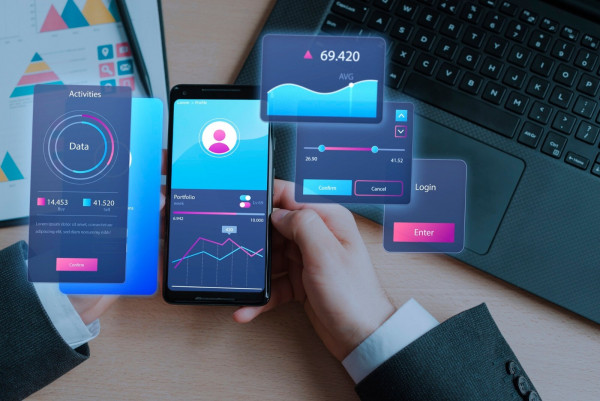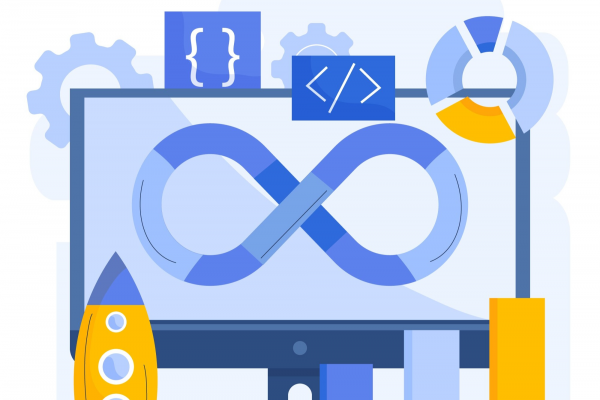If you’re tired of every website tracking your every move, you’re not alone. Today’s internet treats ordinary users as the product. Our personal data is collected, consolidated, and sold without our consent. We are bombarded with advertisements crafted from our stolen data in the hopes that we buy, buy, buy. In this article, we’ll be looking at how Web 3.0 aims to solve the privacy problem while completely changing the game for marketers in the coming decade.
Did you know North America reigns supreme with a 34% slice of the scrumptious Web3 market pie? That’s right! And Web 3.0’s market capitalization is currently sitting pretty at $27.5 billion.
A Quick Premier
Web 1.0 allowed us to search for information online and read it. Nothing more. This was the Internet of the passionate, tech-savvy individual: the Internet of 1989–2005.
Web 2.0 changed the worst parts of Web 1.0. It made websites dynamic instead of static. It introduced the like, share, and comment buttons without which the internet would be unrecognizable today. It introduced the ability to pay online, create content, interact with others, and engage with them. This internet was and is dominated by corporations, business entities, and social media. This was the internet from 2005 until today.
Web 3.0 is the next logical step in evolution. It aims to use artificial intelligence, blockchain technology, and decentralization to regain individuals’ privacy. So this is where we’re headed.
How is Web 3.0 Going To Be Different?
Web 2.0 has come under heavy criticism for the amount of misinformation and disinformation spread online, destabilizing communities worldwide and making the world a more combative place where people are provided with their own echo chambers of information.
Just a handful of companies host most websites. A few handfuls of titans control all content and determine what correct and incorrect discourse is.
According to a recent survey, 43% of users think Web 3.0 would have more regulations than Web 2.0.
So what is Web 3.0 going to do?
Web 3.0 is going to change data ownership in a massive way
In today’s internet, the average user can contribute to the internet by publishing to existing websites like Twitter, Facebook, and TikTok.
The data we publish is our own. But the moment we upload it online, it belongs to the corporation we gave it to.
Web 3.0 is going to change that by using the blockchain to allocate data to each person. Every single person will own a wallet. All the data we generate will become an asset in your wallet. The wallet can be tracked and monitored through the use of blockchain technology.
Web 3.0 is going to bring back privacy.
Wallets and assets are going to work with the help of smart contracts. Each transaction must be agreed to on the blockchain. In practice, this means that if you want to send a photo to someone, this agreement must be listed on the blockchain, and if consent is not given, the photo will be revoked.
Businesses are going to use decentralized autonomous organizations (DAO) to create conditions upon which payment can be made.
Practical Examples
- If you wish to take out a loan, you need to meet the specific requirements of the bank.
- The employee in an organization has to complete their work before they receive payment.
- When a client receives a deliverable, the company will receive payment.
The decentralization of the web will naturally make it more impervious to service interruptions and cybercrime.
A distributed denial-of-service attack can no longer take out a system because the system is no longer operating on a centralized hosting service.
The aim is to increase security, make transactions more transparent, and increase privacy in one fell swoop. Well, almost in one swoop. All of the above will require a serious amount of product engineering to develop new products that can function in the Web 3.0 environment.
Web 3.0 And The Future Of Marketing
Before the internet can jump onto Web 3.0, there will be a transition phase to Web 2.5 first. This is where the features of Web 2.0 and 3.0 are going to exist at the same time.
Consider the membership platform Patreon. This site is where ordinary individuals sell their services to the masses through subscriptions. If you want a service, you subscribe to someone and pay for it. That’s an example of what’s to come.
But what does all this mean for the future of marketing?
- A future beyond cookies.
Google and Apple have already begun to phase out third-party cookies from their platforms. In addition, GDPR and CCPA are forcing advertisers to become more transparent with users regarding their tracking policies.
Web 3.0 will require the explicit consent of users to collect user data. Therefore, they must create incentives and provide users with a more amicable quid pro quo to offer their data in exchange for something of value, such as discounts, crypto tokens, etc.
This is a way for brands to eliminate the middleman altogether and directly engage with their customers to find out what they want. This offers a massive advantage and has the potential to change marketing forever: each individual offers personalized data to the businesses they engage with. This means heavily personalized information with exponentially more value than the cookies of today.
- Decentralized innovative new social media platforms.
Web 3.0 aims to use technologies like the Metaverse to allow consumers to engage with their brands in a way never seen before. In addition, a whole new game is afoot by allowing users to enter their marketplace with augmented reality technologies and combined social media functionality.
It will be important for marketers to find new ways to participate in virtual channels to stay relevant in the coming decade. Combining this with blockchain and virtual reality, how people traverse and engage with brands will completely change from website-based technology to something new.
FAQs
Web 3.0 aims to change the current landscape of the internet, where a handful of big tech companies dominate, and instead democratize the internet. This is done with decentralized applications (Dapps) and the blockchain.
Web 3.0 will monitor transactions on the internet with the aid of blockchain and ledgers. This means a new peer-to-peer-based system where third parties are likely to be shafted and privacy and user control are improved as a result.
Decentralized autonomous organizations are one of the biggest technologies involved in monetizing Web 3.0. Crypto brings with it several platforms where you can play and participate in systems as a means of earning a wage. Live use cases exist in the form of NFT-based games that provide individuals in countries such as the Philippines with a daily wage in exchange for their services in NFT-based games.



